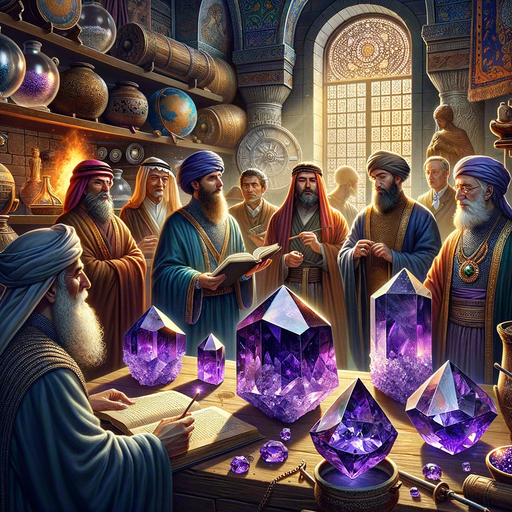Amethyst Purple Majesty: A Vibrant Journey Through Time
Explore the geological formation and historical significance of the mesmerizing Amethyst.

Introduction
Welcome to a captivating exploration of one of the most admired crystals in the world, the Amethyst. This purple quartz, in its myriad shades, from lilac to deep violet, has fascinated civilisations across time and space. But how does this enchanting gemstone form, and what is the historical significance behind its majestic color? Let’s delve in to find out.
Amethyst Formation: A Geological Wonder
Amethyst, a variety of quartz, owes its mesmerizing purple hue to natural irradiation and the presence of iron impurities in its crystal lattice. These gemstones form within geodes, hollow rocks with a crystalline interior. Over millions of years, the geode fills with silica-rich liquids, and layer by layer, the amethyst crystal begins to develop, a process known as hydrothermal growth.
Let’s take a look at the key elements involved in the formation of Amethyst:
| Elements | Role |
|---|---|
| Silica | Forms the primary structure of quartz |
| Iron | Adds the unique purple color |
| Natural Irradiation | Enhances the purple hue |
The Symbolism of Amethyst: Through the Ages
The allure of Amethyst extends beyond its captivating color and geodesic formation. Since ancient times, this gemstone has been revered for its supposed metaphysical properties and symbolic meanings.
Ancient Greece and Rome
In ancient Greek and Roman societies, Amethyst was associated with Bacchus, the god of wine. The stone was believed to prevent intoxication, a myth captured in the word ‘Amethyst’, derived from the Greek ‘amethystos’, meaning ‘not drunken’.
“The wine god Bacchus, angry over an insult, decreed the first person he met would be devoured by his tigers. The unfortunate mortal happened to be a beautiful maiden named Amethyst. The goddess Diana turned Amethyst into a statue of pure crystalline quartz to protect her from the brutal claws. Bacchus wept tears of wine in remorse for his action at the sight of the beautiful statue. The god’s tears stained the quartz purple, creating the gem we know today.” - Ancient Greek Myth
The Middle Ages
During the Middle Ages, Amethyst was held in high esteem by the Church. Bishops frequently adorned their rings with this gem, as it was believed to symbolize piety and celibacy.
Modern Times
In contemporary times, Amethyst is the birthstone for February and associated with qualities of peace, courage, and stability. It remains a beloved gemstone for its beauty and symbolic resonance.
External Reference
For more in-depth understanding about the Amethyst, visit the Gemological Institute of America.
Conclusion
From its formation deep within the earth to its prominent place in history and culture, the Amethyst truly stands as a majestic testament to the splendors of the geological world. Its vibrant hue, rich symbolism, and the intriguing processes involved in its creation make this gemstone an enduring object of fascination for geologists, historians, and gem enthusiasts alike.